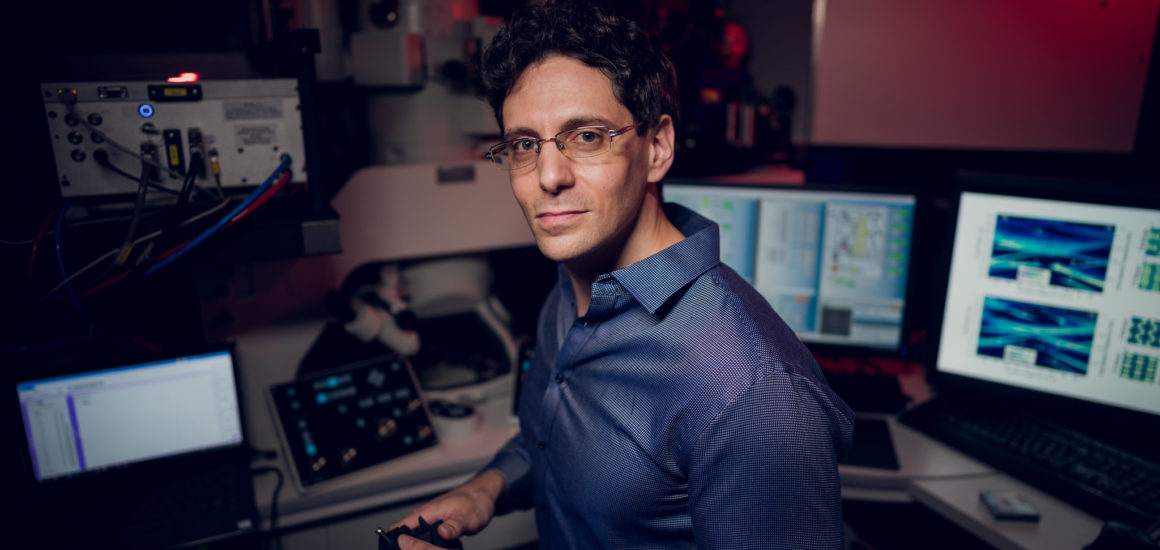Scientists Support Use of Ultraviolet Light to Reduce Indoor Transmission of SARS-CoV-2
June 24, 2020
• An international team of researchers advocates the use of UV-C light in indoor spaces as a way to reduce the transmission of SARS-CoV-2 viruses
• This solution meets the requirements of fast, scalable, and affordable implementation to fulfill the needs of disinfecting workspaces, such as offices, schools, healthcare facilities, and public transportation, to name a few
The COVID-19 outbreak, caused by the SARS-CoV-2 virus, is posing an extraordinary challenge that requires swift worldwide action for the massive deployment of affordable and ready-to-apply measures to drastically reduce its transmission probabilities in indoor spaces. Doing so will allow for the eventual return to conventional activities such as working at the office, going to school, or even attending entertainment events.
Studies show that the virus transmission follows two main paths. Firstly, the virus can be transmitted through the air in droplets exhaled by infected individuals and inhaled by healthy individuals. Secondly, it can be deposited on surfaces from exhalations or hand contact. Several measures are being adopted to help prevent the transmission of this disease. The most common ones refer to facial masks and other physical barriers that if properly used, have proven to be highly effective. However, such measures depend on the compliance of the population.
A long series of studies suggest that virus transmission in indoor spaces is much higher than outdoors. Filters and chemicals have been presented as possible solutions to minimize this problem, but despite their effectiveness in reducing the concentration of contaminated particles and droplets passing through ventilation systems, their installation may be costly and time-consuming. In addition, some chemicals that are very effective for virus disinfection, such as ozone, can be harmful if misused.
To address this dilemma, an international team of experts in the fields of virology, immunology, aerosols, architecture, and physics studied various methods to prevent SARS-CoV-2 propagation in indoor spaces. Based on their findings, published recently in ACS Nano, they are advocating for one measure that they believe to be “particularly efficient, easily deployable, and economically affordable”: virus inactivation by ultraviolet light. The research was conducted by Technion Professor Ido Kaminer, in collaboration with ICREA Prof. Javier García de Abajo at ICFO, ICREA Profs. Andreas Meyerhans (Universitat Pompeu Fabra) and Joan Rosell-Llompart (University Rovira i Virgili), together with Profs. Rufino Javier Hernández (University of the Basque Country), and Tilman Sanchez-Elsner (University of Southampton).
After researching currently available UV-C sources, such as fluorescent lamps, microcavity plasmas, and LEDs, the team concluded that applying this type of light on the inside of the ventilation systems of buildings and in shared indoor spaces while not in use, makes it possible to quickly and efficiently deactivate both airborne and surface-deposited SARS-CoV-2 viruses.
The team also explored the cost of deploying such a technology, and argue that a global capital investment of a few billion dollars in UV-C sources could protect more than a billion indoor workers worldwide.
Disclaimer: UVC equipment for virus disinfection is being commercialized by a number of companies worldwide. The authors of the study have no interest in or are sponsored by any of such companies.
For more than a century, the Technion – Israel Institute of Technology has pioneered in science and technology education and delivered world-changing impact. Proudly a global university, the Technion has long leveraged boundary-crossing collaborations to advance breakthrough research and technologies. Now with a presence in three countries, the Technion will prepare the next generation of global innovators. Technion people, ideas and inventions make immeasurable contributions to the world, innovating in fields from cancer research and sustainable energy to quantum computing and computer science to do good around the world.
The American Technion Society supports visionary education and world-changing impact through the Technion – Israel Institute of Technology. Based in New York City, we represent thousands of US donors, alumni and stakeholders who invest in the Technion’s growth and innovation to advance critical research and technologies that serve the State of Israel and the global good. Over more than 75 years, our nationwide supporter network has funded new Technion scholarships, research, labs, and facilities that have helped deliver world-changing contributions and extend Technion education to campuses in three countries.
For more than a century, the Technion – Israel Institute of Technology has pioneered in science and technology education and delivered world-changing impact. Proudly a global university, the Technion has long leveraged boundary-crossing collaborations to advance breakthrough research and technologies. Now with a presence in three countries, the Technion will prepare the next generation of global innovators. Technion people, ideas and inventions make immeasurable contributions to the world, innovating in fields from cancer research and sustainable energy to quantum computing and computer science to do good around the world.
The American Technion Society supports visionary education and world-changing impact through the Technion – Israel Institute of Technology. Based in New York City, we represent thousands of US donors, alumni and stakeholders who invest in the Technion’s growth and innovation to advance critical research and technologies that serve the State of Israel and the global good. Over more than 75 years, our nationwide supporter network has funded new Technion scholarships, research, labs, and facilities that have helped deliver world-changing contributions and extend Technion education to campuses in three countries.
